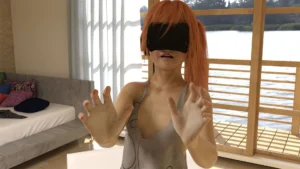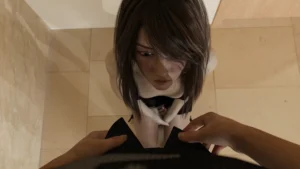
Play Bad Memories
Bad Memories review
Explore the immersive world and unique features of Bad Memories
Bad Memories is a distinctive visual novel game that blends narrative depth with interactive gameplay, inviting players into a complex story filled with emotional and mature themes. This article dives into the core aspects of Bad Memories, offering a detailed look at its gameplay mechanics, storyline, and character development. Whether you’re new to the game or seeking to deepen your understanding, this guide provides practical insights and personal reflections to enhance your experience.
Understanding Bad Memories: Story and Setting
Let’s be honest—we’ve all had moments we’d rather forget. That awkward presentation, that cringe-worthy date, that thing we said that still makes us wince years later. 😅 But what if you could literally step back into those moments, not to relive the pain, but to understand them, and maybe even change their meaning? That’s the powerful, and often heartbreaking, premise at the core of the Bad Memories game story.
This isn’t your typical visual novel where you’re just clicking through dialogue options. It’s an interactive story Bad Memories style that makes you an active participant in unraveling a life. You’re not just observing a plot; you’re digging through the emotional wreckage of the past, piece by painful piece. I remember starting my first playthrough, thinking I was just in for a spooky time, but I ended up on a journey that felt uncomfortably, beautifully human. It’s a Bad Memories plot overview that is less about a sequence of events and more about the emotional archaeology of a single person.
What is the premise of Bad Memories?
The core Bad Memories narrative is deceptively simple. You play as Alex, a young adult who, after a triggering event in their present life, finds themselves mentally and emotionally transported back to their childhood home. 🏚️ This isn’t a physical return, but a deep dive into their own subconscious—a landscape built entirely from fragmented recollections, half-remembered conversations, and potent emotions.
Your goal isn’t to “win” in a traditional sense. It’s to explore. You’ll sift through dusty attics of memory, replay pivotal conversations, and interact with spectral representations of people from Alex’s past. The genius of the Bad Memories game story is that your choices don’t create branching “good” or “bad” endings. Instead, they determine which memories you uncover and how Alex comes to terms with them. Will you confront the painful truth of a parent’s harsh words, or will you find the hidden context that explains their behavior? The path you choose defines Alex’s healing.
The screen fades from the present-day argument to a dimly lit kitchen. A younger version of Alex sits at a table, shoulders hunched. An older figure stands silhouetted in the doorway.
“You always do this. You never listen.”
The dialogue options appear:
* [Listen intently to the tone, not just the words.]
* [Look around the room for other clues.]
* [Shout back.]
This snippet shows the game’s core mechanic. You’re not just choosing a response; you’re choosing a lens through which to view the past. This focus on perspective is what makes the visual novel emotional themes so potent. We’re talking about regret, forgiveness, the fallibility of memory, and the long shadow family casts. It’s a heavy journey, but one that feels incredibly validating. I found myself pausing the game more than once, just to process how a fictional character’s memory was echoing something in my own life. 😢 It’s that powerful.
Who are the main characters?
The Bad Memories characters are the heart and soul of this experience. They aren’t just archetypes; they feel like real, flawed people whose actions are often misunderstood through the lens of a child’s memory. Your interactions with them are the engine of the entire Bad Memories narrative.
Let’s meet the key figures you’ll be grappling with:
| Character | Role & Relationship to Alex | Defining Trait |
|---|---|---|
| Alex (You) | The protagonist; a person revisiting their childhood trauma to understand their present-day struggles. | Introspective, haunted, and seeking closure. |
| Elena (The Mother) | Seen through memories as both a comforting presence and a source of tension; often perceived as critical. | Complex, burdened by her own unseen struggles. |
| Daniel (The Father) | A figure who is often absent in memories, either physically or emotionally, creating a void. | Distant, quiet, with a presence defined by his absence. |
| Maya (The Childhood Friend) | Represents innocence, joy, and a world outside of family drama; memories with her are often bittersweet. | Energetic, loyal, a beacon of light in darker memories. |
The brilliance of these Bad Memories characters is that you never get a full, objective picture of them. You only get Alex’s memory of them. One playthrough, Elena might come across as a cold, demanding parent. In another, by finding different memory fragments, you might uncover her own fears and failures that shaped her actions. 😮 It forces you, the player, to practice empathy. You have to actively look for the good in people who, on the surface, seem to have caused a lot of pain.
My most profound moment was re-contextualizing a memory of my “Daniel” character. I’d always remembered him as simply checked out. But by choosing to explore a different object in the memory—a half-finished project on his desk—the entire scene shifted. The interactive story Bad Memories format revealed he wasn’t indifferent; he was drowning in his own silent stress. It was a game-changer, both for Alex and for me.
How does the setting influence the narrative?
If the characters are the heart, the Bad Memories setting is the nervous system. This isn’t just a backdrop; it’s a character in itself. The entire game takes place within the confines of Alex’s childhood home and its immediate surroundings, but this location is anything but static. 🏠
The Bad Memories setting is a psychological prison and a sanctuary all at once. It physically transforms based on Alex’s emotional state. A hallway that was bright and welcoming in one memory might be dark, narrow, and foreboding in another. A child’s bedroom can feel like the safest place in the world or a lonely cage, depending on which memory you’re exploring. This dynamic environment is a masterclass in showing, not telling. You don’t need a character to say “Alex felt trapped”; you feel it as the walls literally close in around you.
The atmosphere is thick with what I can only describe as “beautiful melancholy.” ☁️ The sound design is full of distant, muffled noises—a radio playing in another room, the creak of a floorboard upstairs, the faint sound of arguing from behind a closed door. The visual style uses a soft, almost dream-like filter, with certain objects in a memory glowing, begging to be interacted with. This directly shapes the Bad Memories game story by making exploration feel intuitive and emotionally driven. You’re not just clicking on hotspots; you’re being drawn to the parts of the past that your psyche is ready to handle.
Ultimately, the Bad Memories setting teaches you that we are all living in the houses our pasts built. The creaky floorboard of a forgotten promise, the locked drawer of a secret, the sunny window of a perfect summer day—they’re all still there, defining the architecture of who we are. By exploring this house, you’re not just learning about Alex’s Bad Memories plot overview; you’re being given the tools to think about the rooms in your own mind. And that is the true, unforgettable power of this game. ✨
Bad Memories offers a rich narrative experience combined with meaningful player choices and a compelling audiovisual presentation. Its unique story and immersive atmosphere make it a memorable title for fans of interactive storytelling. Whether you’re drawn by the emotional depth or the gameplay mechanics, Bad Memories invites you to explore its world and create your own path. Dive in and discover the many layers this game has to offer.




























